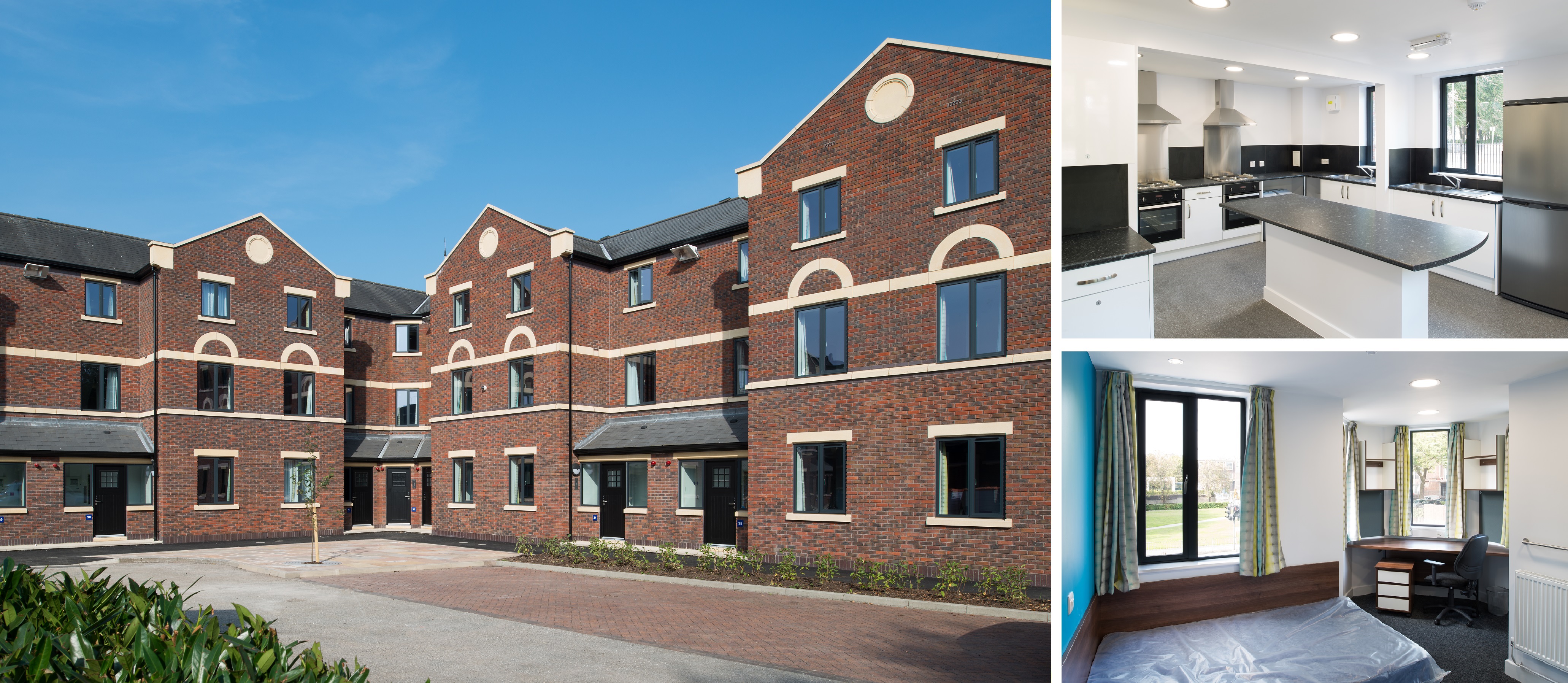Furniture and fixtures donated to charity by the University of Liverpool Construction Company Special Projects
Considerate construction has been a hallmark of the University of the Liverpool Construction Company Special Projects (ULCCO-SP) during its Melville Grove project, which involved a clever way to help charity and the environment.
The development comprised the refurbishment of 49 shared student blocks, each containing between seven and five bedrooms and communal sanitary, kitchen and leisure spaces.
On completion, a total of 338 high quality bed spaces will be handed over to the university.
Rather than making good existing plasterwork and joinery, the team chose to re-plaster all of the rooms and renew all joinery and fittings, thus ensuring the availability of first class new accommodation for the University of Liverpool students. This approach created a surplus of second-hand furniture and fixtures.
These were passed on to the university’s Facilities, Residential and Commercial Services (FRCS) team which worked with social enterprise – Total Reuse – a company based in the north-west which diverts goods away from landfill, to help good causes.
Describing how this was used to maximum community benefit, ULCCO-SP project manager, David Waite said:
“The University has passed on previously used bedroom suites, beds, mirrors, light fittings, furniture and other items. These can be used by organisations such as Lancashire Crisis, Urgent Needs Support Services and 51 other charities to help families in the local communities. The furniture passed on by the university to be repurposed by Total Reuse CIC and used by support services and charities has a total estimated value of £45,000.”
The project was located within the centre of Liverpool close to the main campus, but was within self-contained areas behind its own fence lines.
The refurbishment included renewal of all windows, cleaning of the facades and total strip out of the rooms internally.
The main challenge was working within a bustling university community, with the works being undertaken adjacent to existing flats that are occupied by students. The project was also next to a busy main road, with parking as a prominent issue for staff, students and the local community.
Here are some examples of best practice initiatives carried out by ULCCO-SP:
- The perimeter was clean and free from litter. This was inspected daily and a checklist completed.
- The road through the campus was clean and tidy with good pedestrian segregation and excellent signage.
- The workforce was well presented and wore branded work wear.
- Neighbourhood meetings included a forum for interested parties to educate themselves regarding the aims and needs of the project.
- The induction provided good information on showing respect towards people, as well as advice on dealing with public complaints.
- Free materials were provided to local residents as goodwill gestures.
- Local labour was used wherever possible to reduce travelling distances and benefit the community, as well as apprenticeship opportunities on site.
- There was a designated Scheme champion who was actively promoted by the Project Manager.
- Discarded furniture and fittings were passed on to the university’s Facilities, Residential and Commercial Services (FRCS) team which worked with social enterprise – Total Reuse.
- The site Health and Safety Environmental Plan was reviewed with the site team and updated to reflect the changes to the site layout.
- Dust and noise were identified as environmental issues, with watering to reduce dust, and silenced plant used.
- Targets were set in relation to energy usage and waste recycling was completed by a waste management company.
- A green travel plan was put in place to encourage use of public transport, cycling to work and car sharing.
- Regular site meetings were held with subcontractors and also with operative involvement to discuss safety concerns.
- Traffic plan and evacuation plans were in place, along with fire points.
- There was a trained first aider on site and the first aid box was located in the site offices.
- There were a number of safety initiatives in place, including dust control and face-fit testing of operatives.
- Welfare facilities were available for both male and females, with access to the toilets available for mobility-impaired visitors.
- There was occupational health advice and lifestyle information available. Dietary advice was also available, along with a number of new initiatives covering dementia and hand arm vibration.
- Information has been made available to assist people with literacy and numeracy problems.



